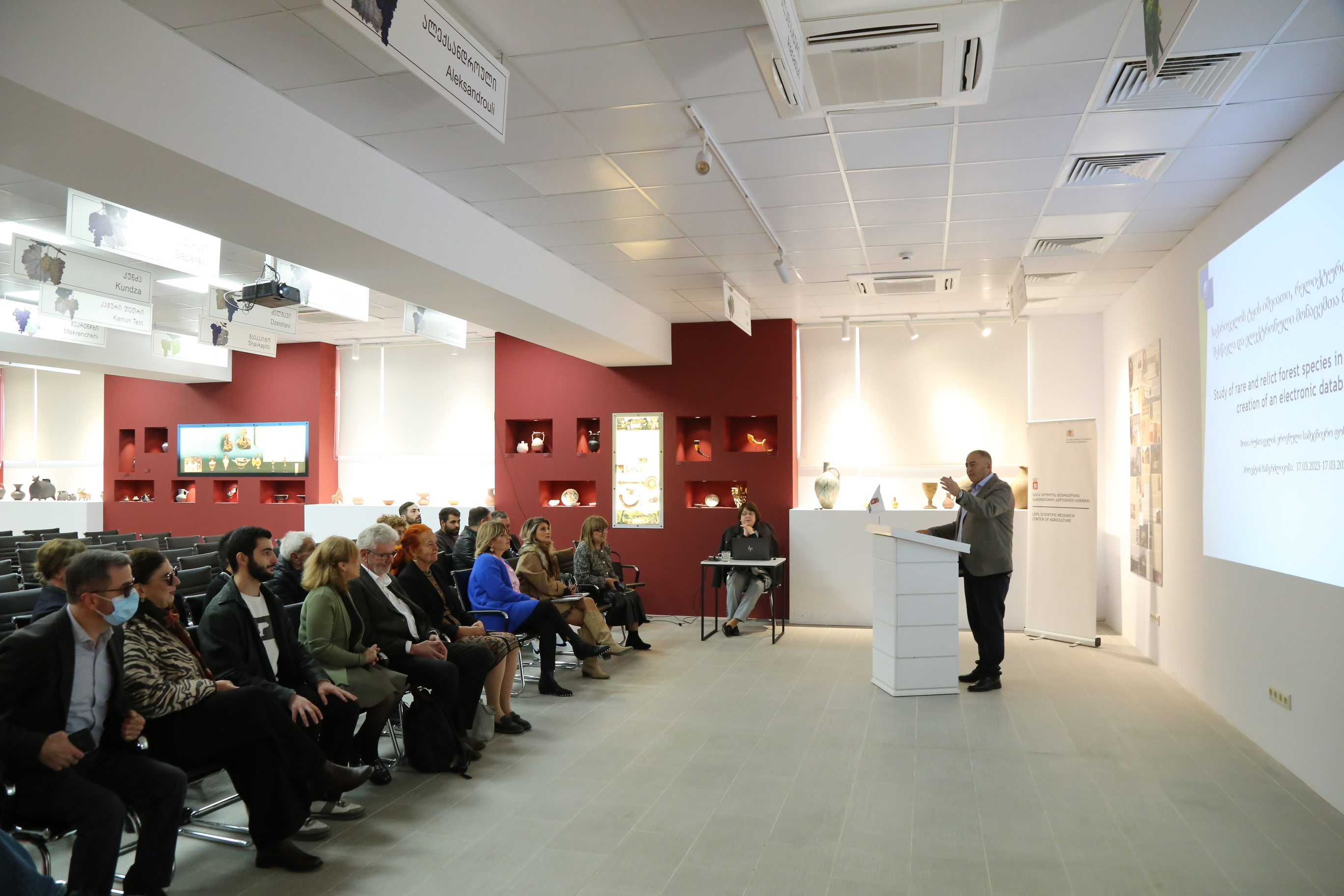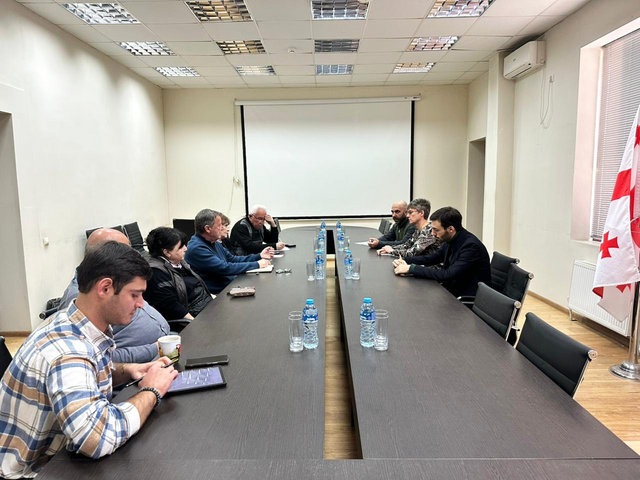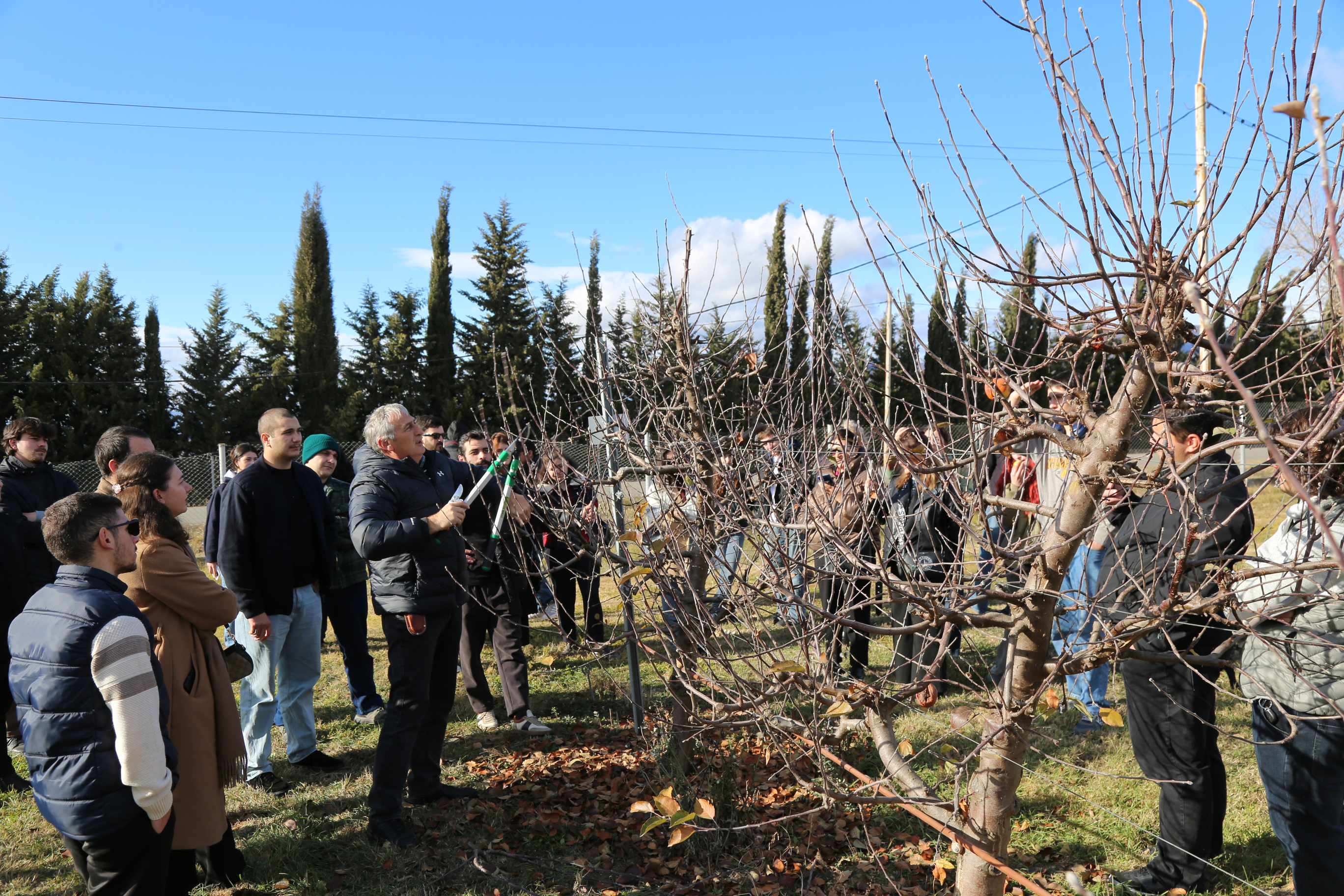News
23.10.2025
For the first time in Georgia, an electronic database of rare and relict forest species has been created
 The summary of the project “Study of Rare and Relict Species of Georgian Forests and Creation of an Electronic Database”, funded by the Shota Rustaveli National Science Foundation of Georgia was held at the Jighaura base, organized by the LEPL Scientific-Research Center of Agriculture.
The summary of the project “Study of Rare and Relict Species of Georgian Forests and Creation of an Electronic Database”, funded by the Shota Rustaveli National Science Foundation of Georgia was held at the Jighaura base, organized by the LEPL Scientific-Research Center of Agriculture.
The project was implemented under the leadership of Nani Goginashvili, Head of the Agroforestry Research Division, with the participation of Georgian and Austrian scientists. The goal of the research was to study rare and relict plants distributed in the country's forest ecosystems and create an electronic database about them.
According to Levan Ujmajuridze, Head of the LEPL Scientific-Research Center of Agriculture, the creation of such a base is an important step towards preserving the country's biodiversity and strengthening international scientific cooperation.
"Our forests are rich in unique genetic resources. The database of rare and relict species will be an important source not only for Georgia, but also for the international scientific community," - noted Levan Ujmajuridze. Within the framework of the project, 18 rare and relict species were studied, among which special attention is paid to unique relict species widespread in Georgia - Colchian oak (Quercus hartwissiana), Pontic oak (Quercus pontica), Zelkova (Zelkova carpinifolia) and Pterocarya (Pterocarya pterocarpa).
"Our forests are rich in rare, relict species, the locations of which are small and information is often scarce. We have conducted an inventory of such species and created a database in Georgian and English. In addition, distribution maps have been compiled and the results will be posted on an international platform," - said Nani Goginashvili, Head of the Center's Agroforestry Research Division.
Within the framework of the project, scientific expeditions were conducted, seed samples were collected and stored in a seed bank in compliance with relevant standards, which ensures the protection of genetic resources of rare species and the possibility of their restoration in the future.
As part of the international partnership, Dr. Berthold Heinze, head of the Genomics Laboratory at the Austrian Forest Research Center, was involved in the project. According to him, the study of rare oaks in Georgian forests will significantly supplement the systematics and genetic database of European oaks.
The project strengthens Georgia's participation in the global conservation of forest genetic resources. The database will soon be available on the international platform — Global Forest Watch.






